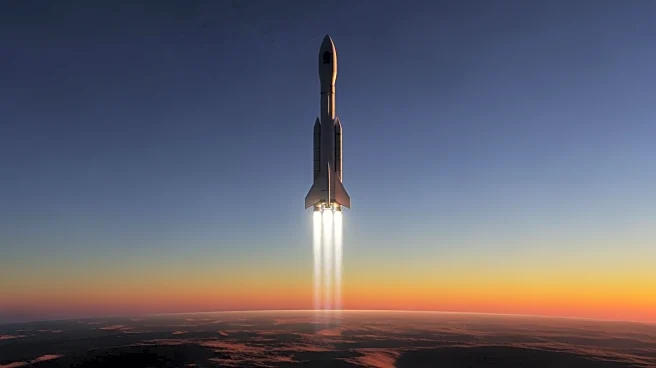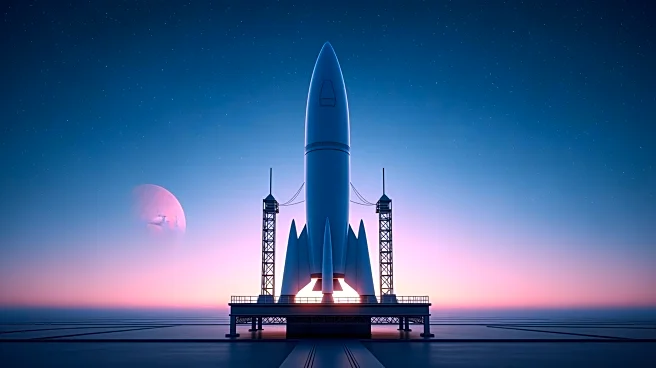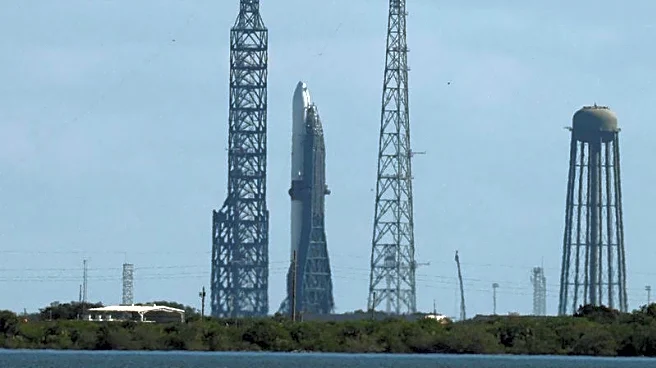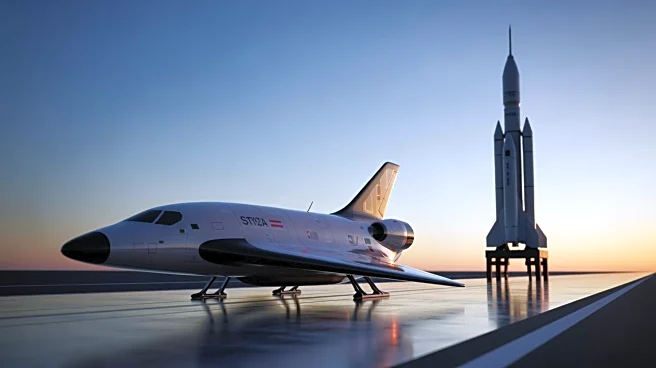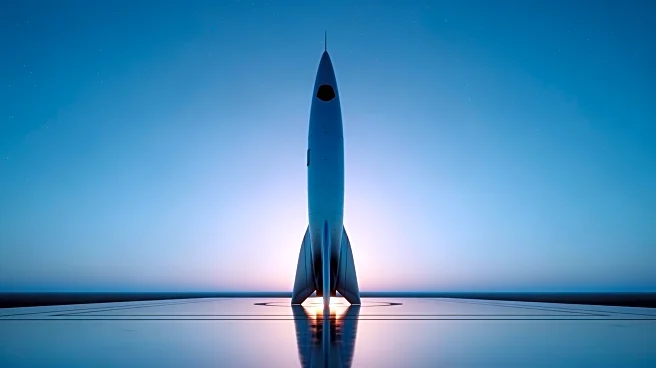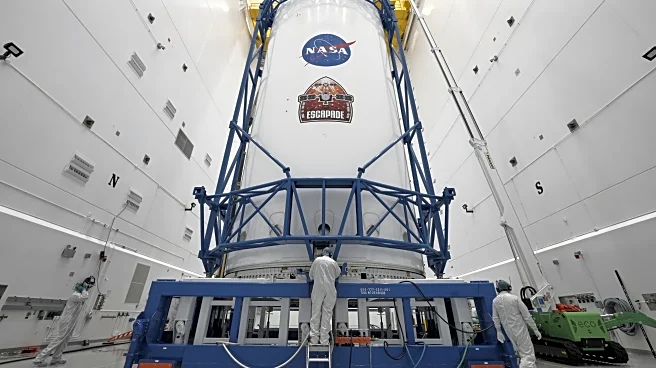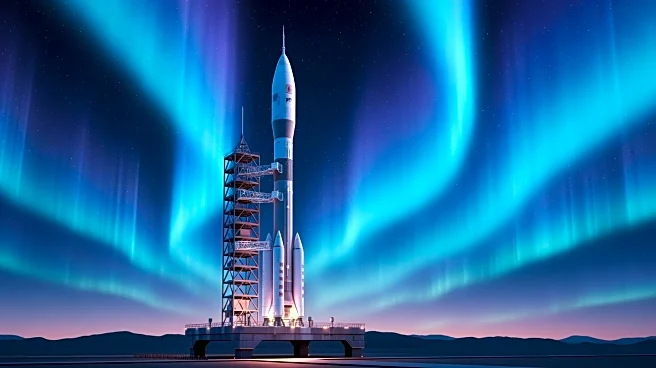What's Happening?
Blue Origin successfully launched its New Glenn rocket from Cape Canaveral Space Force Station, carrying the ESCAPADE mission satellites bound for Mars. The launch occurred on November 13, 2025, after
several delays due to weather and space weather conditions. The ESCAPADE mission, part of NASA's Small Innovative Missions for Planetary Exploration program, aims to study the interactions between solar particles and the Martian magnetic field and atmosphere. The mission involves two small satellites, named Blue and Gold, which will follow each other in Mars orbit to provide simultaneous measurements. This launch marks the second flight of the New Glenn rocket, which also successfully landed its booster on the Jacklyn sea platform.
Why It's Important?
The successful launch and booster recovery of New Glenn represent a significant milestone for Blue Origin, enhancing its competitive position against SpaceX in the reusable rocket market. The ESCAPADE mission is crucial for advancing scientific understanding of Mars' atmosphere and magnetic fields, which could inform future astronaut missions and robotic explorations. The ability to make simultaneous observations with two spacecraft offers a unique stereo perspective, potentially leading to breakthroughs in space weather research. This mission also highlights the growing role of public-private partnerships in space exploration, with Blue Origin playing a key role in NASA's planetary missions.
What's Next?
The ESCAPADE satellites will spend the next year orbiting near Earth before heading to Mars in 2026, with an expected arrival in 2027. Once in Mars orbit, the mission will begin mapping the planet's upper atmosphere and magnetic fields. Blue Origin plans to continue its space exploration efforts, with potential lunar missions in 2026, including the Blue Moon Pathfinder lander and Firefly Aerospace's Elytra Dark lunar transfer orbiter. These missions will further demonstrate New Glenn's capabilities and contribute to NASA's Artemis program, aiming for future moon landings.
Beyond the Headlines
The ESCAPADE mission's innovative trajectory allows launches outside the typical Earth-Mars alignment window, offering flexibility for future missions. This approach could revolutionize how interplanetary missions are planned, reducing dependency on specific launch windows. The mission's focus on space weather interactions at Mars could also provide insights into protecting future astronauts from radiation hazards, a critical consideration for long-term human presence on Mars.
